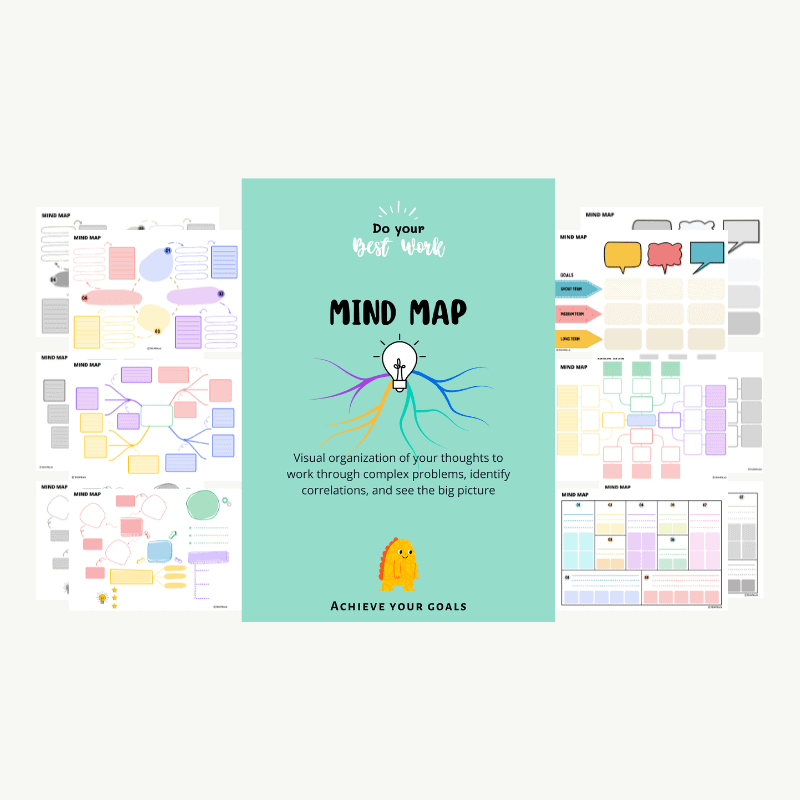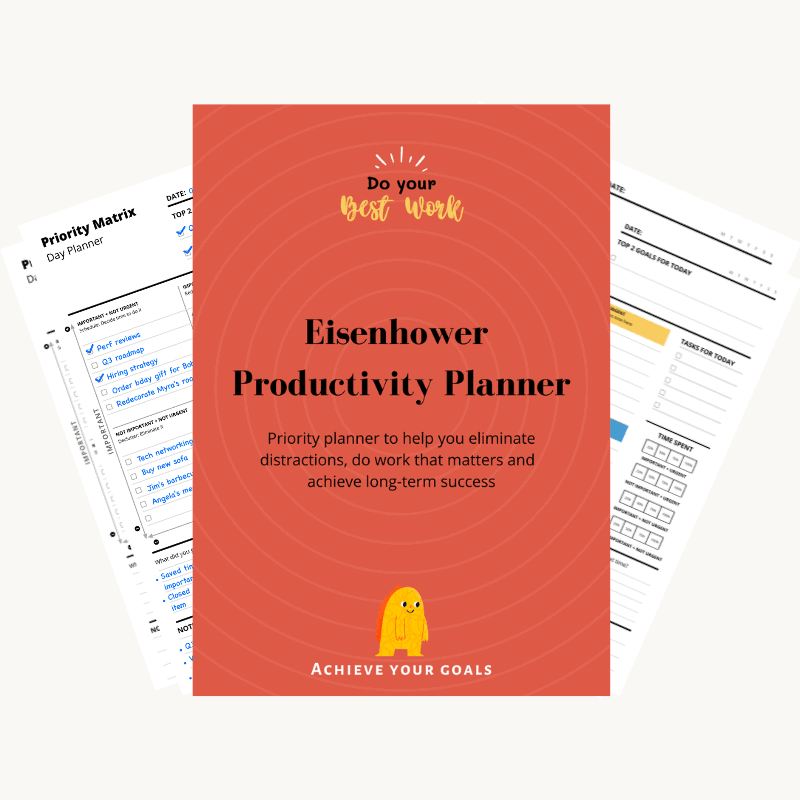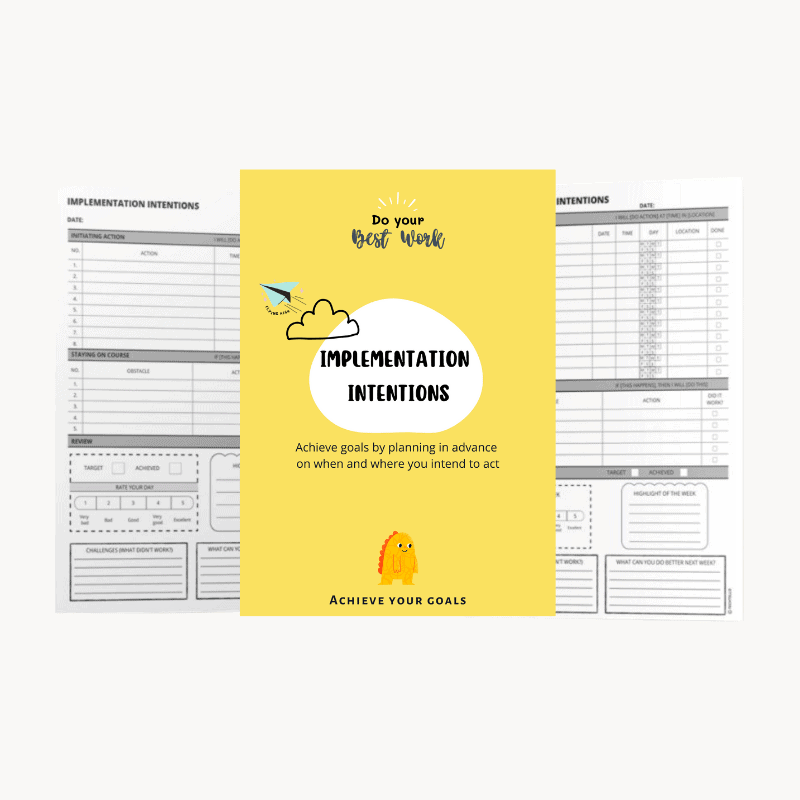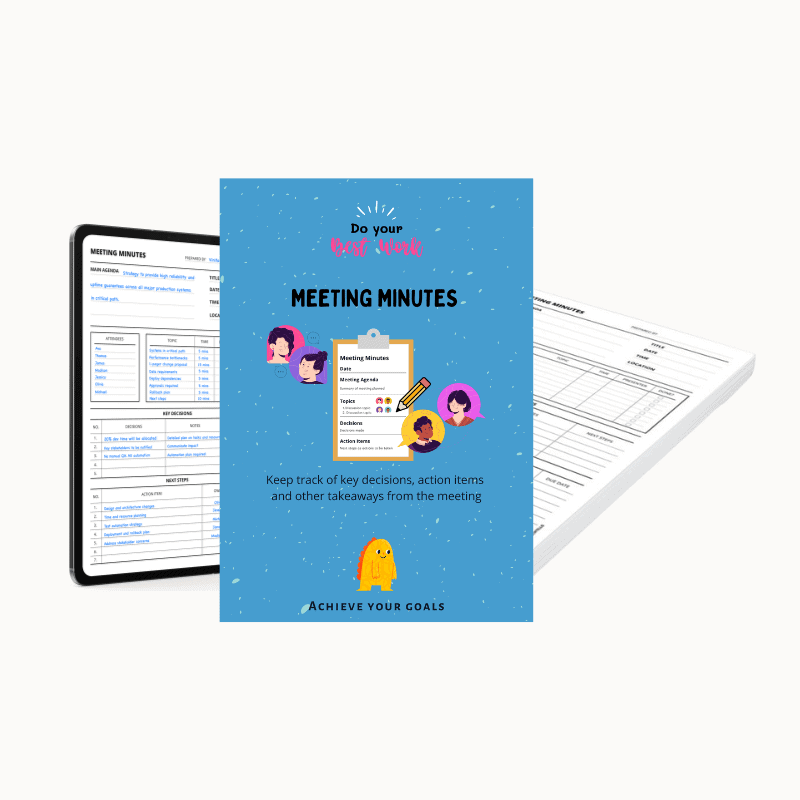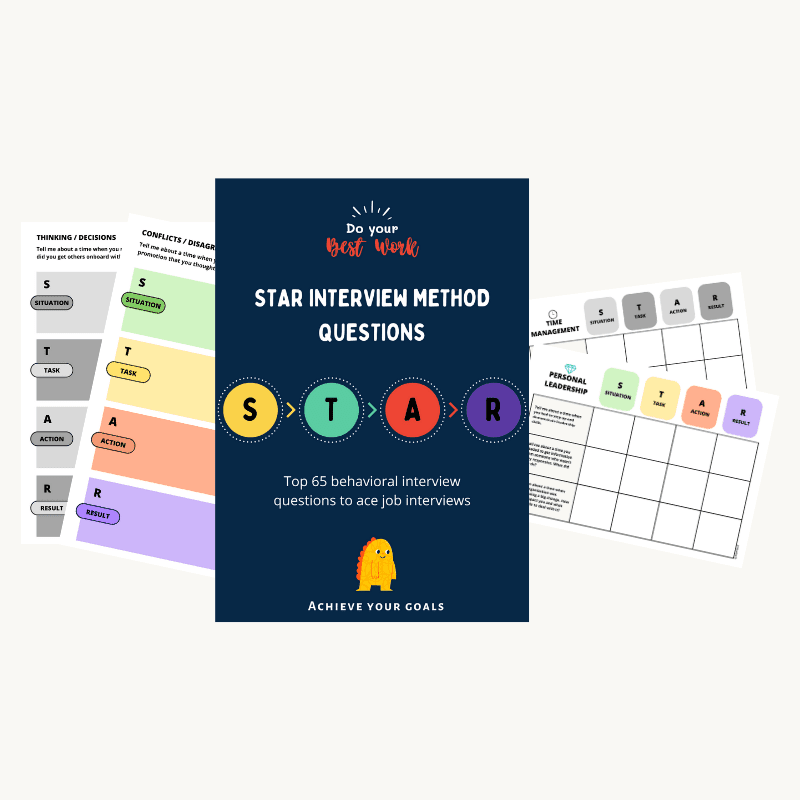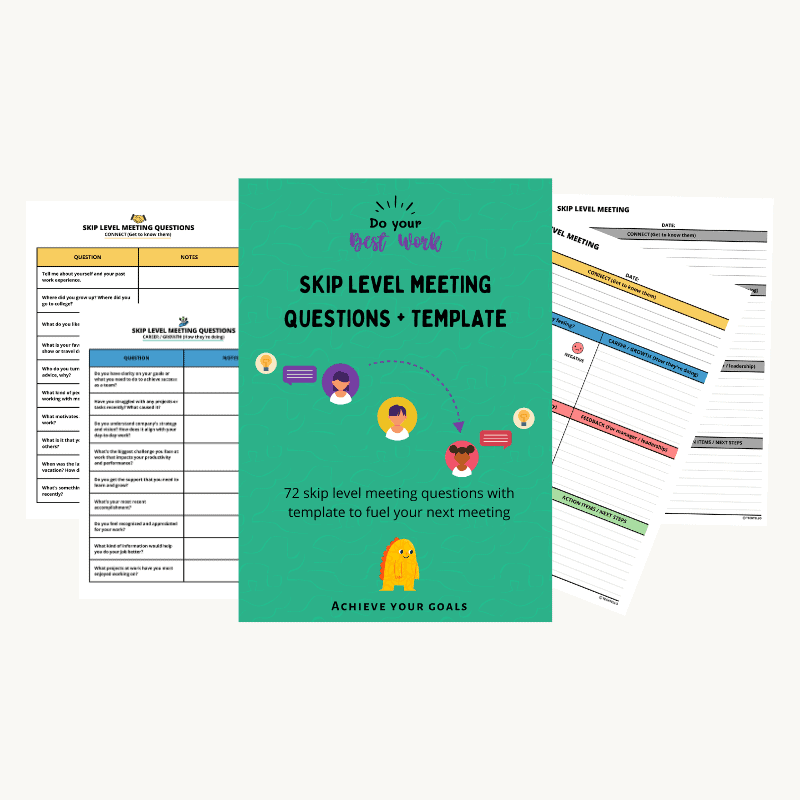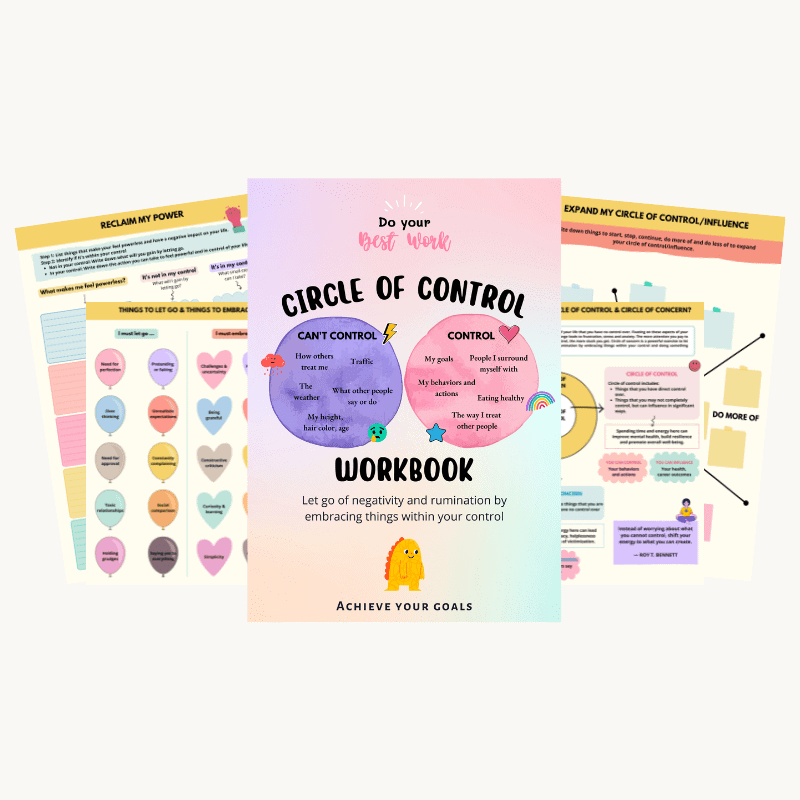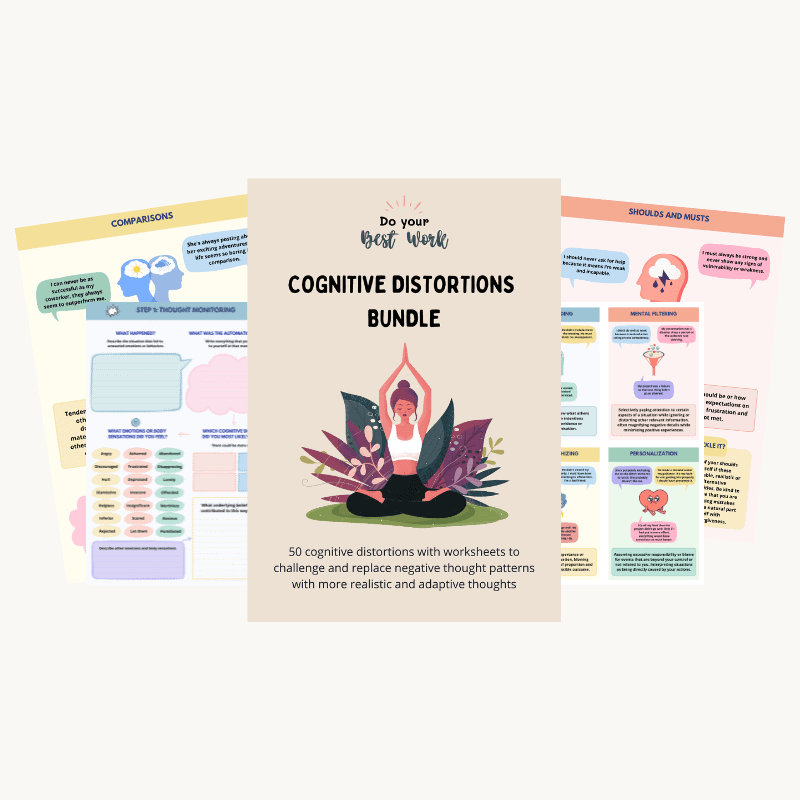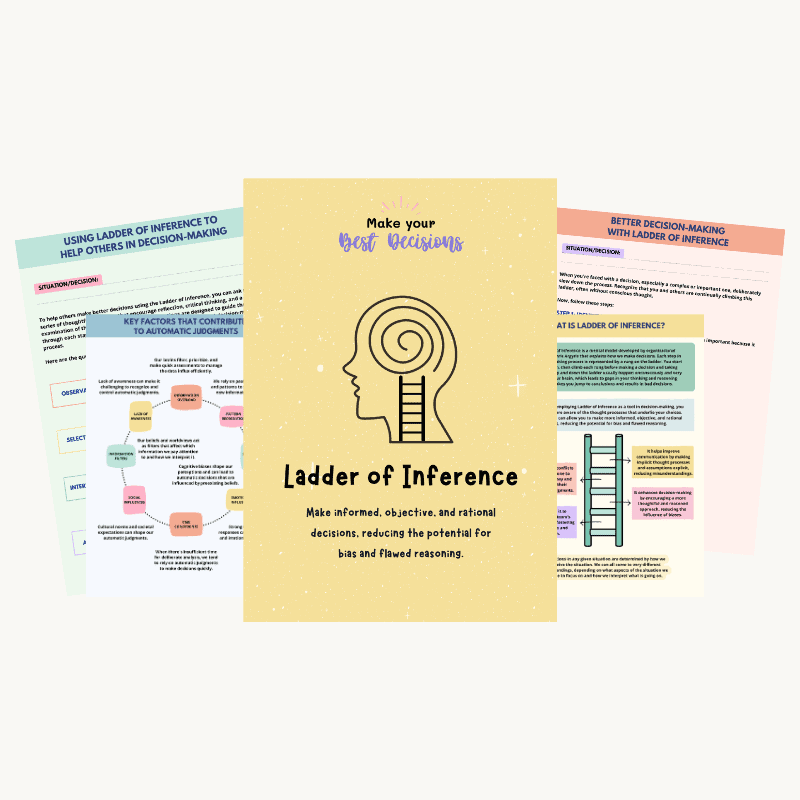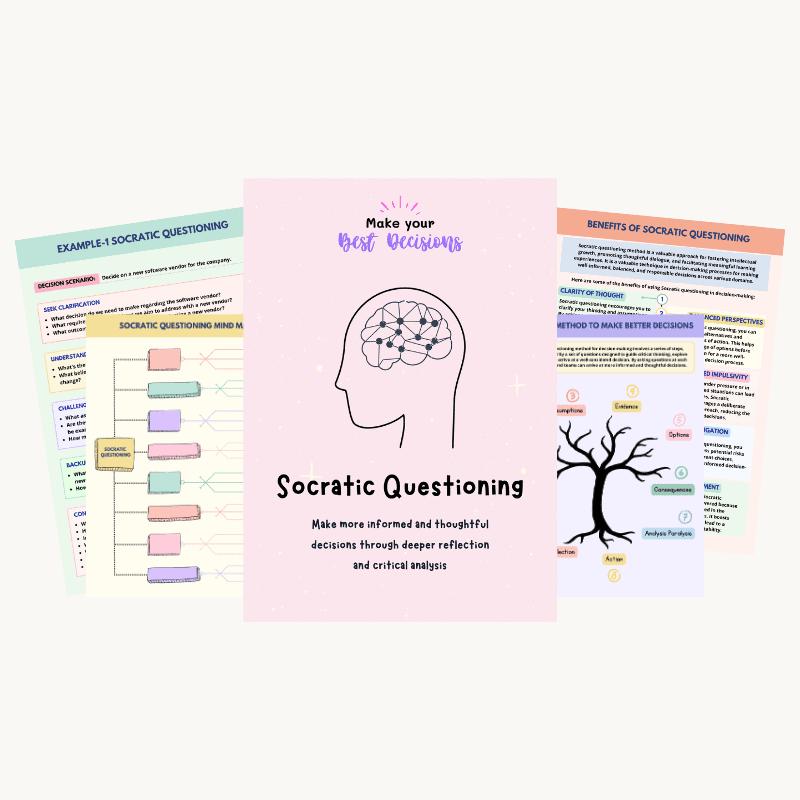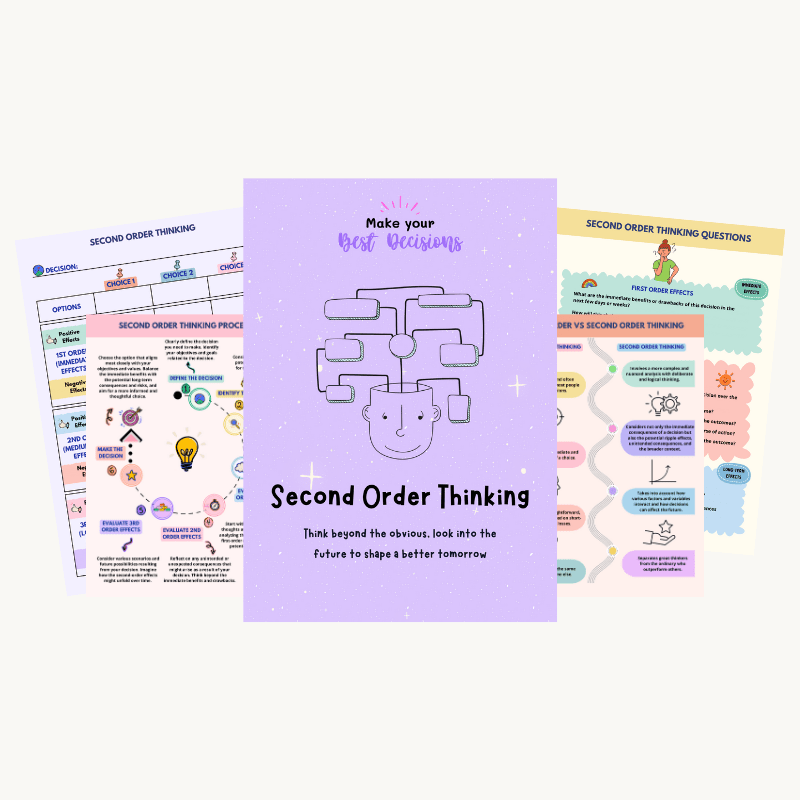How to Work With Different People on Your Team

If you take the time to notice people around you, you’ll find that they all have unique styles in the way they talk, how they work and what motivates or drives them. Each person has a distinct personality that may appeal to you because it’s relatable or bother you because you can’t comprehend the way they think, feel and act.
But we hardly pay attention to others. We hardly take the time to understand what makes them act a certain way. Not understanding others not only leads to misunderstandings, frustration and conflict, it makes us miserable because we simply can’t stand people we need to work with.
For example:
If you’re a fast-paced go-getter, you may feel slowed down by someone who’s more detail-oriented, while they may feel rushed and pushed into a decision.
You prefer collaborating closely, while someone else likes to work independently with minimal interference. You may find them as cold and unresponsive while they may think of you as annoying and painful.
As a problem solver, you may want to fix things and move on. You may feel dragged down by a naysayer who keeps rejecting your ideas and gets on your nerves.
Avoiding people you find unrelatable is not an option because they may well be part of your team or you may be required to collaborate with them on a common goal or project at work. Getting annoyed, irritated or losing your calm when working with such people is not smart, because not loosening up around them will only make the matter worse. When you’re less tensed, more relaxed and comfortable with others, when you let go of rigidity and inhibitions, you can engage with them in a more open and constructive discussion.
Let’s be real. You can’t spend all your time around people you find comfortable, inspiring or like-minded—you can’t handpick your dream team or curate your colleagues like a playlist. Learning to navigate differences and finding ways to work effectively with different kinds of people isn’t just smart—it’s a practical strategy to get things done without losing your mind.
Whether it’s the endless complainer, the interrupter, the credit stealer or the know-it-all, you can’t dodge these personalities at work. They come with the territory. The real skill isn’t avoiding them, it’s learning to navigate around their quirks, protect your peace and still deliver without getting dragged into the drama.
We differ from each other in fundamental ways. We differ in our thoughts, in our feelings, in our wants and beliefs, and in what we say and do. Differences are all around us and are not difficult to see, if we look.
— David Keirsey, Please Understand Me
Here are the different personalities at work and how to work well with each one of them:
The Whiner
The whiners constantly blame, complain and sob. They do not take responsibility for anything and look for excuses to justify anything that’s not well done. They dramatize minor inconveniences and dwell on setbacks far longer than necessary.
Their defeatist tone is emotionally draining to people around as they focus more on venting than resolving. Their repeated complaints not only wastes time and energy, it lowers morale by spreading negativity and influencing others to adopt a pessimistic tone.
I never get recognized like others do.
I’m always left out of the loop.
I’m already drowning, and now this?
Complainers are those Difficult People who manage to find fault with everything, malcontents who gripe ad nauseam about everything from how messy your desk is to the temperature outside.
— Robert M. Bramson, Coping With Difficult People
To work with a whiner without getting drained:
- Give space for venting, but with a time limit without validating their negativity.
- Redirect the conversation by shifting it towards action.
- Encourage them to take ownership, not promote dependency by acting as a rescuer.
- Give feedback calmly and respectfully when necessary to hold them accountable.
For example:
I get that it feels tough. What’s one thing you can do today to get back on track?
If there’s a communication gap, what can you do to close it? Would it help to ask for updates directly?
It sounds like you’re really frustrated. But that attitude won’t help us move forward. Can we focus on what we can improve?
Whiners often feel powerless. Instead of becoming their emotional crutch, help them regain control by shifting to solution mode.
Break Free from Drama
This workbook will enable you to recognize and eliminate the drama from your life and shift to empowerment.
The Manipulator
Manipulators are people with ill-intention who use deceptive tactics—like flattery, guilt-tripping, gaslighting or half-truths—to make you do things that serve their interests, often at your expense. They may take credit for your ideas, stir up conflict or shower you with praise just to secure your trust, only to misuse it later for their own gain.
Manipulators are hard to spot because with the intention to cheat and deceive, they use tricks that are meant to influence, exploit and control you. They are quick in sensing your weak spots and smart to know how to capitalize on them. Their aim isn’t collaboration, but control—with the end goal to benefit themselves, no matter the cost to others.
Manipulators are also hungry for attention—they eat into a significant portion of your time and energy by making you prioritize their needs and concerns over things that you value in life.
I was counting on you. I told everyone you’d come through—don’t let me down.
You’re the only one who’s really smart about these things—I wouldn’t trust anyone else with this.
Oh… I thought you already knew. I assumed someone else told you.
Manipulators often know us better than we know ourselves. They know what buttons to push, when to do so and how hard to press. Our lack of self-awareness can easily set us up to be exploited.
— George K. Simon Jr., In Sheep’s Clothing
To work with a manipulator without turning it into a confrontation:
- Manipulators thrive on vagueness. Set clear boundaries—clarify what you will and won’t do.
- Stay emotionally neutral. Don’t react defensively or fall into guilt traps. Stay calm and stick to facts.
- Bring conversations into the open. This limits their ability to twist facts later.
- Force them to be specific by asking clarifying questions.
For example:
I’m not available to take this on right now.
I hear your concerns, but I’d prefer we talk through the actual situation.
Let’s get everyone together so we’re all on the same page.
Who exactly asked you to tell me this?
Manipulators are often strategic and subtle, which can make them hard to spot initially. Instead of letting them disarm you with their charm or twist reality to get what they want, throw them off balance by staying grounded in facts, setting clear boundaries and questioning inconsistencies in what they say or do.
The People Pleaser
A people pleaser over-accommodates, suppresses their own needs and says yes to everything only to avoid conflict, gain approval, be liked and accepted.
Fear of rejection, guilt or the belief that saying no will make them look unkind makes them apologize excessively even when not at fault, say yes to work while already being overwhelmed and nod in agreement to avoid making others unhappy. Not only do they have a hard time setting boundaries, they don’t give honest feedback when it’s needed the most.
People pleasers feel burnout from over commitment, suffer from low self-esteem and lack of recognition leads to resentment that builds silently over time.
I’m sorry. I hope I didn’t upset you.
It’s no trouble at all! (even if it is)
I don’t mind staying late again.
Working with a people pleaser may seem harmless at first—they’re agreeable, helpful and rarely say no. What more could you want? But lack of honesty, tendency to overcommit and sugarcoat a problem instead of addressing it directly can lead to blind spots, missed deadlines and make problems linger on.
A people-pleaser is worried about rejection. They have a need, as we all do, to be accepted and treasured—to be loved. But in people-pleasers, this need is amplified to the extent that they will bend over backward just to not lose that love or acceptance. They are driven by avoiding negative consequences rather than creating positive possibilities. Additionally, they feel that they are always on the brink of rejection, so this urgency causes a type of panic that is characterized by doing anything possible.
― Patrick King, Stop People Pleasing
To make a people pleaser prioritize effectiveness over harmony :
- Show them that saying no respectfully is normal and healthy.
- Model boundary-setting so they feel safe doing it too.
- Normalize making mistakes so that they don’t tie it to their self-worth.
- Let them know it’s okay to disagree and offer honest feedback without fear of judgment.
For example:
Is this something you can realistically take on this week? It’s ok to say no if your plate’s full.
I won’t be able to help this time, but let’s figure out another way.
No need to apologize so much—it’s a small fix. Everyone makes mistakes and this is just part of learning.
I noticed you agreed with both points—which one do you actually support? It’s okay to take a stand.
Instead of rewarding people pleasers for seeking approval and external validation, make them feel safe to show up as themselves, not the version they think everyone wants.
The Naysayer
A naysayer is quick to shoot down ideas, over-emphasizes risks and problems and is often resistant to change—it is not possible, it is not good enough, it will fail. Their tendency to lean towards the negative, being highly pessimistic or overly cautious can shoot down creativity and innovation before it gets a chance to breathe. They try to cast doom and gloom over everything you say or do.
Their constant second guessing can often be contagious—not getting the support you need can make you doubt yourself, question your abilities and strangle your willpower to move boldly and take risks. Constantly pointing out what could go wrong makes you turn cautious too—you start equating new with risky and prefer safe options over bold initiatives.
That’s never going to work.
You’re not thinking this through.
We tried that five years ago. Disaster.
Congenital naysayers are among the greatest stumbling blocks to thinking free. Rather than imagining how a new idea might possibly work, they instinctively think of all the reasons why it won’t. They sincerely believe that they are doing everyone a favor by reducing the amount of time spent on bad or foolish ideas. But what they really do is undermine the creativity that can be harvested from thinking free.
— Steven Sample, The Contrarian’s Guide to Leadership
To work with a naysayer without letting them suck your energy and enthusiasm:
- Ask them to share specific concerns instead of generalizing and spreading negativity.
- Challenge them to contribute by asking for solutions instead of only sharing critique.
- Suggest starting with small experiments to make change appear less threatening.
- Invite others to share their opinion instead of letting a naysayers voice dominate decision-making.
For example:
Can you walk us through what exactly you see going wrong?
If this plan doesn’t work, what would you suggest as a better alternative?
Why don’t we pilot this idea on a small scale and see what we learn.
Let’s invite others who could help shape the idea further.
Naysayers may be annoying but you can’t always ignore them. Instead of treating them as an enemy of progress and silencing their voice, turn their skepticism into an asset rather than a roadblock through structured and guided thinking.
The Know-it-all
The know-it-all is the most annoying person in the room who gives advice without being asked, pretends to know everything and has a strong tendency to overlook the intelligence of others. They dominate discussions under the justification of being helpful, shut others down by telling them that they’re wrong and assume authority on every topic by flaunting their past experience.
Constant one-upping and unsolicited advice not only feels patronizing, the desire to always be right makes it hard to correct or challenge them. Working with them can be maddening because they won’t show an ounce of curiosity about your perspective and will go on and on just to prove they’re right and you’re wrong.
Trust me, I’ve seen this a hundred times.
Let me tell you how this really works.
Well actually, the correct term is …
A know-it-all poses to know everything, so he will therefore tell you anything; although his brain forgets that one crucial thing, which is that other people, too, have brains.
— Criss Jami, Killosophy
To work with a know-it-all without letting them intimidate or frustrate you:
- Avoid power struggle by bringing in data and letting facts do the talking.
- Don’t compete by turning it into a battle of egos, instead keep the focus on outcomes and shared goals.
- Give feedback by focusing on the impact of their behavior, not intent.
- Encourage turn taking to ensure everyone gets a chance to voice their opinion without one person dominating the room.
For example:
That’s interesting—I’ve seen it work a bit differently. Can I share what I’ve noticed?
Let’s assume we’re both partly right—what would the middle ground look like?
I know your intention is to help, but sometimes people hold back ideas because they feel overshadowed.
Let’s go around the table to hear from each person.
Know-it-alls lack humility and openness in their quest to be labeled as the smartest person in the room. Instead of letting them run the show, tactfully steer the discussion by creating space for more voices.
The Slacker
A slacker puts in minimal effort, avoids taking responsibility and often lets others pick up the slack. They miss deadlines, deliver incomplete work and procrastinate too much to avoid doing the work. You can’t rely on them because you don’t know when they’ll just disappear.
Their tendency to avoid doing the work makes them deflect blame, give excuses or do the bare minimum just to get by. Their behavior not only slows down projects due to missing deliverables and last-minute chaos, other members of the team who are forced to pick up the slack turn frustrated and resentful.
I’m still thinking it through.
I’ll get to it after I wrap up a few other things.
I thought someone else was handling that part.
Oh, I didn’t realize that was urgent.
Lazy people do a little work and think they should be winning. Winners work as hard as possible and still worry that they are being lazy.
― Lewis Caralla
Work with a slacker without letting them engage in avoidance or excuse-making:
- Set clear deadlines, deliverables and responsibilities. Get things documented to avoid ambiguity.
- Hold them accountable in weekly check-ins and stand-up meetings.
- Don’t cover for their actions or rescue them. Let them face the consequences of their inaction.
- Remind them of the importance of meeting expectations—frame it in terms of their goals or reputation.
- Engage in a 1-1 to explore why they appear disengaged—burnout, lack of clarity, personal issues?
For example:
Can you confirm that you’ll finish the presentation slides by Thursday 2 PM so we’re ready for review?
We’re waiting on your part before we can move forward — is there anything holding you up?
If you don’t hold up your commitments, your manager will not trust you on the next project.
I’ve noticed the weekly tasks have been delayed a few times. Is there something bothering you?
Don’t assume slackers are lazy, malicious or they simply don’t care. Being overwhelmed, underchallenged or unsure how their role fits into the big picture can keep them disengaged and discouraged. Helping them connect their work to a larger goal or showing how their contribution matters can reignite motivation and improve follow-through.
The Charmer
Charmers thrive on being liked. They’re naturally charismatic, personable, persuasive and often very socially intelligent. They use warmth, charisma and flattery to build quick rapport, diffuse tension and gain influence—-winning people over with compliments, humor and friendliness.
Charmers believe that likability can open doors that aren’t accessible otherwise—this makes them avoid conflict, sugarcoat feedback or leave problems unaddressed just to keep the peace. While not always deceptive, charmers may overpromise, sidestep difficult conversations and manipulate outcomes to maintain their likable image. Their principle is ‘win people over, be liked, build influence.”
That’s why you’re the boss!
You always have the best ideas—I don’t know how you do it.
Leave it with me, I’ll make it happen.
Okay, okay, too serious in here—who needs coffee?
Charmers are those who seduce by making their targets the center of attention. They don’t highlight their own selves, but rather their entire focus is on bringing comfort and pleasure to their targets. They avoid all sorts of conflict and appeal to a person’s vanity by making them talk about themselves. They watch and observe allowing their targets to open up completely. Once they know their weaknesses, they use that information to give them what they want.
— Robert Greene, The Art of Seduction
To work with a charmer without getting blinded by their smooth talk:
- Don’t let their charisma blur expectations or accountability. Get things down in writing.
- Charmers often over promise or speak in vague terms. Ask for concrete details and commitments.
- Acknowledge their people skills, but focus on results.
- Stay alert to actions, not just words. Hold them accountable kindly but firmly.
For example:
Great, I’ll summarize what we discussed in an email so we both have a reference. Let me know if I missed anything.
I love the vision! What specific changes are you planning? And can we agree on a first milestone and deadline so we stay on track?
You definitely have a talent for building rapport. Did they confirm next steps or sign off on anything?
When can you realistically get it done, and how can I support you in making that happen?
Charmers are often skilled communicators, but their charm can mask manipulation, a lack of follow-through or superficiality. Don’t let their energy and optimism fool you—look for real substance behind that facade.
Master Difficult Conversations
Engage in healthy dialogue, build stronger relationships and achieve a better outcome.
The Perfectionist
Perfectionists have a long list of what constitutes wrong, but only one outcome meets the mark—their version. Exemplary performance, high standards and 100% perfect outcome just the way they expect. Things have to be their way or they are simply not “good enough.” They set excessively high standards for themselves and others and equate performance with self-worth. They have a hard time delegating—and even when they do hand off tasks—their inner critic is rarely content, often left feeling frustrated, angry and dissatisfied.
They have a strong tendency to classify everything as important, feel compelled to overdeliver and constantly push themselves beyond their limits.
They obsess over minute details and even after achieving something significant, they struggle to celebrate—it’s the flaws or what they could have done better that dominates their focus.
I just need a few more hours to polish this—it’s not quite there yet.
No offense, but I’d rather do it myself to make sure it’s done right.
I reworked the presentation slides again—just didn’t like how they flowed.
Perfectionism is not a quest for the best. It is a pursuit of the worst in ourselves, the part that tells us that nothing we do will ever be good enough—that we should try again.
— Julia Cameron, The Artist’s Way
To work with a perfectionist without getting pulled into their vortex:
- Be transparent about timelines and priorities. Be clear that finishing on time matters more than flawless execution.
- Agree upfront on what “good enough” looks like and remind them that any tweaking should serve the agreed upon goal, not derail progress.
- Appreciate them for their eye for detail, but gently highlight how it can lead to delays. Encourage them to aim for quality without tipping into counterproductive territory.
- Help them distinguish between striving for excellence and chasing perfectionism. Excellence is about utilizing yours and others’ potential to seek a great outcome. Perfectionism is about obsession to the point of being self-destructive.
For example:
Let’s finalize the draft by Wednesday—even if it’s not flawless, we can always iterate.
Let’s agree that our ‘good enough’ here is a clean, clear deck that tells a strong story and meets the deadline. Perfect formatting is great, but not if it keeps us from rehearsing or submitting on time.
I really admire how thorough you are—it definitely raises the quality of our work. That said, I’ve noticed we sometimes get stuck in the final tweaks. Maybe we can set a limit on how much time we spend refining so we keep things moving.
Sometimes aiming for excellence means knowing when to stop. Chasing perfection can burn us out or delay things. Let’s focus on making it great, not flawless.
A perfectionist’s drive for flawlessness can elevate standards, but it can also lead to bottlenecks, analysis paralysis, delays and burnout. Prevent them from undermining team confidence or slowing down progress by helping them see the benefits of becoming a satisficer—seeking good enough—as opposed to a maximizer—seeking the absolute best.
The Go-getter
Go-getters are highly driven, proactive and focused on achievement. They’re known for taking initiatives and making things happen—they focus on what matters, bounce back quickly from setbacks and don’t need hand-holding.
While they’re highly motivated and energizing to be around, they can also be overly aggressive or competitive. They may bulldoze others’ ideas, ignore quieter voices, rush into decisions and overlook details—they have a low tolerance for ambiguity or slowness because speed matters to them the most.
Their energy and a sense of urgency can bring sluggish projects back on track, but their intensity can also create friction and tension with slower-paced team members or those who value quality, process or are more detail-oriented.
If it’s possible, I’ll find a way.
I’d rather take a risk than sit on the sidelines.
We’re overthinking—let’s move.
I’ll take care of it.
If I can do it, I’ll do it better than it was ever done before, and if I can’t do that I’ll quit to save you the embarrassment of firing me.
— Peter B. Kyne, The Go-Getter
To work with a go-getter, stay effective, respectful and collaborative:
- Be clear about roles, responsibilities and limits so they don’t run over others unintentionally.
- Acknowledge their results, but remind them when quality, input or pacing matter more.
- Go-getters appreciate directness and hate fluff—focus on decisions and next steps.
- They respect strength more than passivity. Say “no” or “not yet” clearly when appropriate.
- Put them on tasks that need energy, urgency and follow-through—pair them with team members who provide balance.
For example:
Feel free to lead the charge, but check in with me before committing the team to deadlines.
You’re right, we don’t want to stall. But some input here might actually help us avoid backtracking later.
I’ll keep this brief—we’ve hit a delay, but here’s the plan to recover.
I hear you—and I get why you want to move fast. I’m not comfortable approving this without seeing the data first.
This timeline is aggressive, but I know you thrive under pressure. Let me know how I can support your lead.
Go-getters shine when given space to lead, create traction or solve urgent problems, but don’t forget to set boundaries to ensure they’re lifting the whole team, not running ahead alone.
The Fixer
Fixers are quick to take initiative in a crisis—they’re problem focused and like to step in when something is broken or stuck. They’re strong problem solvers and critical thinkers who bring stability and structure to unclear situations, bridge gaps and restore order when things don’t go as expected.
They’re highly resourceful and dependable as they can bring clarity to messy situations, but they may also disempower others and promote dependency by completely taking over. They operate with a rescue mentality—things are not going to get fixed unless they jump in and save the day.
Let me take a look at that—it shouldn’t be too hard to fix.
I’ve seen this before. Leave it with me.
Why am I always the one cleaning up the mess?
It’s not my job, but someone’s got to do it.
A rescuer’s greatest fear is that they will end up alone. They believe that their total value comes from how much they do for others. It’s difficult for them to see their worth beyond what they have to offer in the way of “stuff” or “service.” They believe, “If you need me, you won’t leave me.” They scramble to make themselves indispensable in order to avoid abandonment.
– Lynne Forrest
To work with a fixer without promoting their savior traits:
- Fixers need room to solve problems. Give them autonomy, but set clear limits to avoid burnout or overreach.
- Acknowledge and appreciate their help without feeding their savior complex.
- Instead of dumping problems on them, look for ways to collaborate by seeking guidance and advice.
- Utilize their problem solving skills by getting their input in other situations, not just crisis mode.
- Encourage them to let go, delegate and trust others to do the job.
For example:
I trust you to own this part—just keep me in the loop if you need support or hit a wall.
Your ability to step in during the crunch was crucial. Let’s make sure the system is set up so it doesn’t keep falling on you.
I’m stuck here—can I get your input on how we could fix this together?
Your ideas during that issue were sharp—can we loop you in earlier for planning next time?
I know you can handle this, but is there a way we can share the load so you’re not always in rescue mode?
Fixers are the firefighters who aren’t afraid to step into a burning building—but don’t let them run towards the flames everytime because others in the team also need to learn to handle the heat.
The Optimist
An optimist will lift your spirits up when you’re feeling down by spinning a positive narrative of your situation or making you believe that change is possible and things can get better. They’re the bright light, the hope and the morale boosters who help you storm out from a negative spiral of rumination and overthinking by reframing setbacks as temporary and solvable.
But the uplifting energy they bring to any situation also comes with blind spots. Their positivity can be toxic when they overlook risks, dismiss valid concerns and push others to take on more than is realistic. Hope and possibility-thinking is inspiring only when it’s grounded in reality, not wishful thinking.
We’ve gotten through worse—we’ll get through this too.
If we focus on the good, the rest will follow.
It’s not the end—just a new beginning.
Every challenge is an opportunity in disguise.
An optimist is neither naive, nor blind to the facts, nor in denial of grim reality. An optimist believes in the optimal usage of all options available, no matter how limited. As such, an optimist always sees the big picture. How else to keep track of all that’s out there? An optimist is simply a proactive realist.
— Vera Nazarian, The Perpetual Calendar of Inspiration
To work with an optimist without overriding realism:
- Appreciate their positivity, but ground conversation in facts.
- Balance their enthusiasm with practical follow-through.
- Don’t shut down their optimism—channel it.
- Be direct about issues without being cynical.
- Help them slow down and reflect.
For example:
I love your energy on this. Let’s map out the real risks too so we’re fully prepared.
Great idea! Can we sketch out what this would look like week by week so we don’t lose steam?
I like how you see opportunity here. Let’s pair that vision with a plan B, just in case.
I’m optimistic too, but this part’s not working. Can we tackle it before it snowballs?
Before we charge ahead, how can we make sure we’ve thought through what could go wrong?
An optimist lights the way with hope and vision, but they need help to keep one foot on the ground so they can’t avoid tough realities.
Stop Overthinking Workbook
Overcome negative thought patterns, reduce stress and live a worry free life.
The Energizer
Energizers bring enthusiasm, positive energy and a spark that motivates, inspires and excites people around them to move and get things done. They radiate optimism, see possibilities and rally others around a shared goal by generating new ideas and constantly pushing boundaries.
While energizers can boost team spirit and help others feel more engaged, their high energy can also feel exhausting and may overshadow other voices. Their bright outlook and the tendency to rush ahead can make them blind to risks or ignore valid concerns raised by their team.
I’ll get it started—who’s with me?
Let’s make it happen—no excuses!
This is going to be great—I can feel it!
We’re going to crush this—let’s go!
You can do anything if you have enthusiasm. Enthusiasm is the yeast that makes your hope rise to the stars. Enthusiasm is the sparkle in your eye, it is the swing in your gait, the grip in your hand, the irresistible surge of your will and your energy to execute your ideas.
— Percy H. Whiting, The 5 Great Rules of Selling
To work with an energizer without being swept along in their excitement:
- Embrace their enthusiasm by inviting them to contribute to ideas and strategies, but don’t forget to set boundaries.
- Leverage their energy for morale boosting by inviting them to kick-off team meetings or lead brainstorming sessions.
- Balance their high energy with practicality by pairing them with others who can ground their ideas in reality.
- Encourage them to pause, listen and consider other perspectives. Use structured check-ins to allow quieter team members to share inputs without one voice dominating the room.
For example:
I love how energized you are about these new possibilities! Let’s capture all your ideas first, then we’ll sort out which ones are the most feasible and assign them to the team so we can stay on track.
Can you lead this meeting? Your energy can get everyone pumped and excited about the project.
Your vision is great. Can you work with John to plan out the implementation steps?
Let’s do a quick round where everyone shares one idea before we move forward.
Energizers bring in a contagious energy to the workplace that can enable others to rise above their perceived limitations, but letting them jump ahead too quickly without keeping their enthusiasm in check can quickly spiral into chaos and burnout.
Mind Map Templates
Work through complex problems, identify correlations, and see the big picture using these mind map worksheets.
The Strategist
Strategists are big-picture thinkers who have a penchant for looking ahead, connecting the dots and envisioning long-term plans. They’re highly analytical and data-driven and don’t act till they have applied their due diligence in analyzing risks and surprises that might pop up along the way.
But some strategists can veer towards over-rationalizing, which makes them place an undue amount of importance to data and logic while dismissing intuition or emotional insights that are required to drive innovation and remain competitive in the market. They often need to be reminded that people—not just strategies—-drive successful outcomes. Balancing strategy with empathy is crucial to get people’s buy-in and make them feel invested in the plan.
Let’s take a step back and look at the bigger picture here.
Let’s identify potential roadblocks before we commit.
We need to evaluate the risks before moving forward.
How does this fit into our broader strategy?
Big-picture thinkers broaden their outlook by striving to learn from every experience. They don’t rest on their successes, they learn from them.
— John C. Maxwell, How Successful People Think
To work with a strategist without getting stuck in the overthinking loop:
- Strategists love to shape direction. Show that you value their ability to map out a clear plan.
- They thrive on information to make good plans. Give them clear updates grounded in facts and data.
- They may sometimes overthink. Nudge them to act and move forward by suggesting small, low-risk tests or experiments.
- They love discussions that sharpen their thinking. Engage with them in a constructive dialogue by sharing your ideas with clear logic and evidence.
For example:
I appreciate how you can see where this project could go long-term. Can you help lay out a roadmap?
Here’s the data we’ve got and why we think this is a good next step—what do you see as the biggest risk?
Why don’t we pilot this idea on a small scale? If it works, we can expand.
Your plan is solid. What if we tweak this part to make it even stronger? Here’s the data that shows this change will be highly beneficial.
Instead of missing opportunities for action by slipping into analysis-paralysis with the strategists, help them recognize when it’s time to pause and reflect and when it’s time to act decisively, even if there’s ambiguity and uncertainty involved.
The Silent Achiever
Silent achievers work behind the scenes without seeking spotlight or recognition. They keep their heads down and consistently deliver great results, letting their work speak for itself. They’re highly reliable and can be counted on to meet commitments, even under pressure, without making a fuss or drawing attention.
But focusing on doing rather than talking can sometimes mean their achievements go unnoticed. They can be overlooked for promotions or high visibility tasks because they treat self-promotion as boasting and never advocate for themselves. Their quiet approach can be misinterpreted as disinterest or lack of ambition—they’re passed over for key opportunities as others fail to recognize the true depth and impact of their contributions.
It’s not a big deal—I just did my part.
I prefer to stay in the background and let the results speak for themselves.
I’m not one to shout about what I’ve done.
I’d rather listen and learn first before I speak up.
Great achievers express their voice through the use of their intelligence. Achievers, for example, develop their mental energy into vision, their physical energy into discipline, their emotional energy into passion, and their spiritual energy into conscience—their inward moral sense of what is right and wrong and their drive toward meaning and contribution.
— Stephen R. Covey, The 8th Habit
To work with a silent achiever without making them feel uncomfortable:
- Bring visibility to their work by acknowledging and appreciating their contributions because they may not shout about their success or the great things they achieved.
- They tend to stay silent in large groups, even though they have valuable insights to share. Encourage them to speak up in a smaller or a more 1:1 setting.
- Make speaking about achievements natural by asking them to present their work with the intent to help others learn and add value.
For example:
I noticed how thorough your report was. It really helped us move forward.
I’d love to hear your thoughts on this. Can we discuss it separately if that’s more comfortable for you?
Could you walk us through this part of the project in a small team huddle tomorrow?
Silent achievers are often invisible, working tirelessly and diligently behind the scenes. Pay attention to their impact, not how much they speak.
Summary
- Whiners emphasize problems rather than explore possibilities. They blame and complain about unfairness, workloads or other people to avoid taking responsibility.
- Manipulators use subtle persuasion tactics—often twisting facts or exaggerating details—to fool you. They’re skilled at exploiting your emotions to get what they want.
- People pleasers will go out of their way to make you happy because they seek approval and validation every step of the way. Their desire to be liked and accepted can lead to burnout and feelings of resentment in the long-run.
- Naysayers are quick to reject ideas and point out flaws without offering solutions or support. Their negativity can kill enthusiasm to take risks and move forward boldly.
- Know-it-alls like to dominate conversations by sharing their knowledge and expertise. They don’t like to be challenged because questioning them attacks their ego.
- Slackers are great at dodging work and burdening others with extra tasks. They do the bare minimum and refuse to take accountability for not meeting expectations.
- Charmers can light up a room with their warmth and aura. Their charisma can make you feel special even when they manipulate you with empty promises and statements that lack substance.
- Perfectionists have extremely high standards and can often get stuck in endless refinements or critiques that can delay projects and slow down progress. They won’t let go and accept anything less than a perfect outcome.
- Go-getters are highly action oriented and like to get things done. They’re often pulled in to get projects back on track, but their desire to move fast can make them overlook details or skip important steps.
- Fixers dive in with confidence into crisis situations or messy problems. They like to solve tough problems, fixing things that are broken or rescuing others when they’re stuck. Their behavior can often promote dependency instead of empowerment.
- An optimist’s sunny outlook can lift team spirits by showing possibilities where others see obstacles. They need to balance optimism with facts though, because ignoring reality can often be disastrous.
- Energizers bring infectious enthusiasm that gets projects moving and teams engaged. Their energy if not channeled properly can make team members feel exhausted and burnt out.
- Strategists are great at mapping out plans and providing clarity on how different pieces fit together. But they can also get stuck in analysis paralysis and fail to act when it’s needed the most.
- Silent achievers contribute significantly while working behind the scenes because they’re not interested in self-promotion. But not putting in the effort to bring visibility to their work can mean their efforts go unrecognized.




